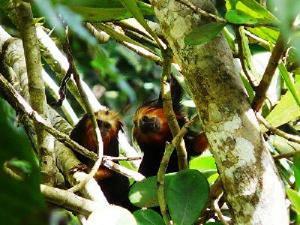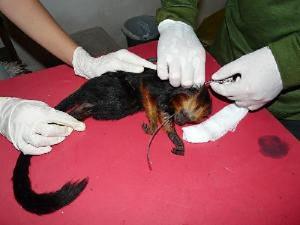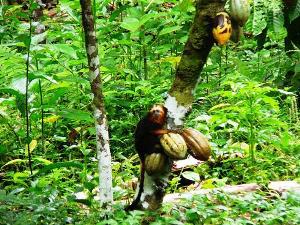Leonardo de Carvalho Oliveira
Other projects
24 Mar 2010
Ecology and Behaviour of Golden-Headed Lion Tamarins in Cabruca Agroforest, Bahia State, Brazil
I will evaluate which characteristics of cabruca allow this agroforest to be used by GHLTS and how the use of cabruca affects ecological and demographic parameters of the population and its genetic structure.

Cabruca agroforest (cocoa plantation with native forest overstory) has been considered an important type of habitat for conservation of Atlantic Forest biodiversity in southern Bahia, Brazil. Cabruca is the predominant forest type throughout the range of the golden-headed lion tamarin (Leontopithecus chrysomelas) an endangered primate, endemic to fragmented forests of southern Bahia state.

The goal of my study is to evaluate which characteristics of cabruca, if any, allow this agroforest to be used by GHLTS for establishing home ranges and/or dispersal, and how the use of cabruca affects ecological and demographic parameters of the population and its genetic structure (isolated populations, one or more metapopulations or a single panmictic population). These questions are considered the highest priority by the International Committee for Lion Tamarin Conservation, a group of specialists responsible for evaluating challenges and suggesting research priorities for the four endangered species in this genus.

I will characterize cabruca in the study areas by measuring phytosociological variables using the point-centre-quadrant method. Field assistants and I will census GHLTs in the different types of cabruca by using play-backs of vocalizations (long calls) of lion tamarins. Non-injurious live-trapping, a technique that has been used for 20 years by my academic adviser and his colleagues, will be used to evaluate GHLT group characteristics (size, composition) in cabruca and native forest. During these captures, individuals will be weighed and the group composition determined. These individuals will be released immediately. One individual from each group in cabruca will receive a radio-collar for post-capture monitoring (radio-telemetry). Location of each group will be determined at 20-min intervals using GPS. This technique will permit me to estimate the ecological parameters (home range size, habitat and sleeping site use). I will also collect hair samples from the captured animals to evaluate genetic variability among the populations of GHLTs. I will use polymorphic microsatellite loci to compare the genetic variability among all sampled populations. This analysis will allow me to determine how cabruca affects the rate of gene flow among sub-populations or populations.
The results of my research will, for example, allow me to prioritize types of cabruca agroforest and specific geographic areas that are important for GHLT conservation, either for protection as federal or state conservation units or as private reserves (RPPNs).